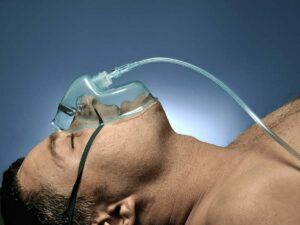Considering the latest advancements in oxygen therapy for recovery and healing? Hyperbaric Oxygen Therapy and Normobaric Oxygen Therapy each offer distinct advantages, but understanding their differences is crucial for optimal outcomes.
With years of experience in oxygen therapy technologies, this guide offers valuable insights derived from scientific research and clinical practice.
HBOT involves breathing oxygen in a pressurized chamber, enhancing oxygen delivery to tissues, while Normobaric Oxygen Therapy provides oxygen at standard pressure, focusing on increasing the oxygen inhalation concentration.
In this guide, readers will delve into the scientific principles underlying each therapy, explore clinical applications, and understand decision-making criteria for therapy selection to optimize patient outcomes.
Dive into discovery now!
1. Overview of the Importance of Oxygen Therapy
Oxygen therapy is critical treatment modality in both emergency and chronic conditions. It plays an important role in hospitals, rehabilitation centers, and clinics, improving the quality of life for patients with a wide range of health issues. From aiding in the treatment of infections to accelerating wound healing, the benefits of oxygen therapy are well-documented and highly regarded by medical professionals.
Here’s why that’s important, by elevating oxygen levels in the blood, therapies like HBOT and Normobaric Oxygen Therapy can significantly impact patient outcomes. They are not just about providing immediate relief; these therapies contribute to long-term recovery processes, making them indispensable tools in modern medical care.

2. Hyperbaric Oxygen Therapy (HBOT) Explained
Hyperbaric oxygen therapy involves breathing pure oxygen in a chamber where the atmospheric pressure is increased to higher than normal levels. This hyperbaric condition allows the body to absorb more oxygen than it would under normal circumstances, deeply saturating body tissues with oxygen.
Interestingly, the concept of hyperbaric therapy is not new. The first documented use dates back to 1662 when Henshaw, a British physician, placed patients in a container with pressurized air, according to historical data from the National Center for Biotechnology Information. Stay with me now, as we explore the benefits of Hyperbaric Oxygen Therapy:
Accelerates Healing of Severe Wounds
Hyperbaric conditions significantly increase oxygen delivery to tissues, speeding up the repair process of wounds, particularly those that are stubborn or non-healing. For instance, diabetic patients with foot ulcers have seen remarkable wound improvement after undergoing HBOT, reducing the need for amputation.
Enhances the Body’s Immune Response
By increasing oxygen levels, HBOT strengthens the body’s ability to fight off infections and reduce inflammation, acting as a natural immune booster.
Aids in Recovery from Brain Injuries
Oxygen under pressure can penetrate deeper into the brain tissue, helping to reduce swelling and facilitate the recovery of brain function after injury. For instance, patients who have suffered from traumatic brain injuries have experienced significant improvements in cognitive functions and a reduction in symptoms after undergoing a series of treatments.
Supports Treatment of Decompression Sickness
A lifeline for divers, HBOT is effective in treating decompression sickness, a risk associated with scuba diving and high-altitude activities. Explore how OxygenArk can support your diving center or medical facility with our Hyperbaric Chambers tailored for decompression sickness treatment.
3. Normobaric Oxygen Therapy Unveiled
Normobaric oxygen therapy provides patients with 100% oxygen at normal atmospheric pressure, distinguishing it from other oxygen-based treatments. Unlike its pressurized counterpart, HBOT, Normobaric Therapy can be administered in more accessible settings, making it a versatile option for various medical and therapeutic needs. Here’s what I mean by highlighting the benefits that make it a vital tool in medical care:
- Enhances Wound Healing: By delivering oxygen directly to the bloodstream, it supports faster healing of wounds, especially for patients with compromised blood flow.
- Improves Cognitive Function: Studies have shown improvements in cognitive functions among patients with brain injuries, offering a beacon of hope for recovery.
- Boosts Energy Levels: Oxygen plays a key role in energy production, and patients often report feeling more energized and alert after therapy. Discover how OxygenArk can enhance your medical or therapeutic practice with Hyperbaric Chambers.
- Reduces the Risk of Infection: A high oxygen environment can inhibit the growth of bacteria and viruses, offering an additional layer of protection for patients with open wounds or compromised immune systems.

4. Comparative Analysis: HBOT vs. Normobaric Oxygen Therapy
When comparing Hyperbaric Oxygen Therapy (HBOT) and Normobaric Oxygen Therapy, it’s clear that each offers unique benefits tailored to specific medical needs. Here are the key differences that stand out between these two therapies:
Pressure Environment
HBOT exposes patients to oxygen at pressures higher than the atmosphere, enhancing oxygen absorption and tissue saturation. Normobaric oxygen therapy, on the other hand, provides 100% oxygen at normal atmospheric pressure. This fundamental difference impacts how each therapy is administered and its potential applications in medical treatment.
Treatment Setting
HBOT requires a specialized chamber for treatment, limiting its availability to equipped facilities. Normobaric oxygen therapy can be administered in a wider range of settings, including outpatient facilities and home environments, making it more accessible for continuous or routine care.
Medical Conditions Treated
HBOT is highly effective for conditions requiring deep tissue oxygenation, such as severe wound healing, decompression sickness, and certain infections. Normobaric oxygen therapy is often used for less severe conditions, supporting overall wellness and recovery, cognitive function improvement, and energy enhancement.
Side Effects and Safety
While both therapies are generally safe, HBOT carries a risk of specific side effects related to increased pressure, such as ear discomfort or, in rare cases, oxygen toxicity. But how do you weigh these considerations? Normobaric oxygen therapy has fewer potential side effects, primarily because it operates at normal atmospheric pressure.
| Aspect |
HBOT |
Normobaric Oxygen Therapy |
| Operating Pressure |
Operates at increased pressure environments |
Operates at normal atmospheric pressure |
| Potential Side Effects |
Ear discomfort, oxygen toxicity (rare) |
Fewer potential side effects due to normal pressure |
| Application |
Utilizes pressurized chambers |
Administered via masks or nasal cannulas |
| Treatment Duration |
Sessions typically last 60-90 minutes |
Duration of treatment may vary |
| Medical Indications |
Used for decompression sickness, wounds healing, etc. |
Commonly employed for acute hypoxemia, carbon monoxide poisoning, etc. |
5. 4 Tips for Choosing the Right Oxygen Therapy for Your Needs
Selecting the right oxygen therapy is crucial for optimizing patient outcomes and ensuring the treatment is tailored to individual needs. Here are some tips to guide patients and healthcare providers through this decision-making process:
#1 Analyze Pressure Requirements
HBOT operates at pressures 1.5 to 3 times higher than normal atmospheric pressure, crucial for conditions requiring deep tissue oxygenation, such as serious infections or ischemic wounds. For managing such conditions, evaluate if the increased pressure, typically around 2.4 ATA (atmospheres absolute), can offer the therapeutic benefits needed.
#2 Consider Pressure Tolerance and Patient Comfort
Not all patients tolerate the pressurization process well. Individuals with claustrophobia or specific ear problems may find HBOT challenging. But how do you decide in such situations? In such cases, opting for normobaric oxygen therapy, which doesn’t involve a pressurized environment, could be a more comfortable and equally effective option.
#3 Treatment Accessibility and Frequency
Evaluate how often the patient will need therapy and their ability to access the treatment facility. HBOT sessions typically last 90 to 120 minutes and may require daily sessions for several weeks. In contrast, normobaric oxygen therapy can be administered more flexibly, making it a suitable option for patients needing less frequent or long-term treatment.
#4 Potential Side Effects
Be aware of the potential side effects associated with each therapy. While HBOT can lead to ear pressure issues or, in rare cases, oxygen toxicity, normobaric oxygen therapy has minimal side effects, mainly limited to oxygen flow discomfort. Patients should be evaluated for their risk tolerance and potential for experiencing side effects.
Dive Deeper Into Our Resources
Looking for more diverse product options? Browse through our handpicked selections:
Still haven’t found what you’re looking for? Don’t hesitate to contact us. We’re available around the clock to assist you.
Conclusion
Understanding the distinct differences between HBOT and Normobaric Oxygen Therapy is key to selecting the right treatment for specific medical conditions. This guide aims to help patients and healthcare providers make informed decisions by highlighting each therapy’s unique benefits and applications.
For businesses seeking further information on integrating Hyperbaric Chambers into their medical or therapeutic offerings, Oxygen-ark is your go-to resource. Explore our solutions tailored to your needs, and contact us for personalized guidance.


